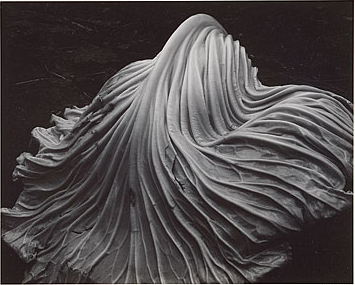
 Weston (1886-1958), born in Chicago, moved to California when he was 21. From an early age he knew he wanted to be a photographer. His from initial work was typical of the soft focus as seen in pictorialism that was popular at the time. Within a few years, however, he abandoned that style and went on to be one of the foremost champions of highly detailed photographic images, known as modernism. His subjects included landscapes, still life, nudes, portrait, genre and parody.
Weston (1886-1958), born in Chicago, moved to California when he was 21. From an early age he knew he wanted to be a photographer. His from initial work was typical of the soft focus as seen in pictorialism that was popular at the time. Within a few years, however, he abandoned that style and went on to be one of the foremost champions of highly detailed photographic images, known as modernism. His subjects included landscapes, still life, nudes, portrait, genre and parody.
“Anything that excites me for any reason, I will photograph; not searching for unusual subject matter, but making the commonplace unusual. “
In 1931 he photographed a single cabbage leaf in monochrome (above). This image was purchased by the Australian National Gallery and included in his fiftieth anniversary portfolio spanning the years 1902—1952.
“Consulting the rules of composition before taking a photograph, is like consulting the laws of gravity before going for a walk. “
“I see no reason for recording the obvious. “
In 1947 he stopped photograping when he was diagnosed with Parkinson’s disease. For the remaining ten years of his life he oversaw the printing of more than 1,000 of his most famous images. He was a founding member of the f64 club along with Ansel Adams.
